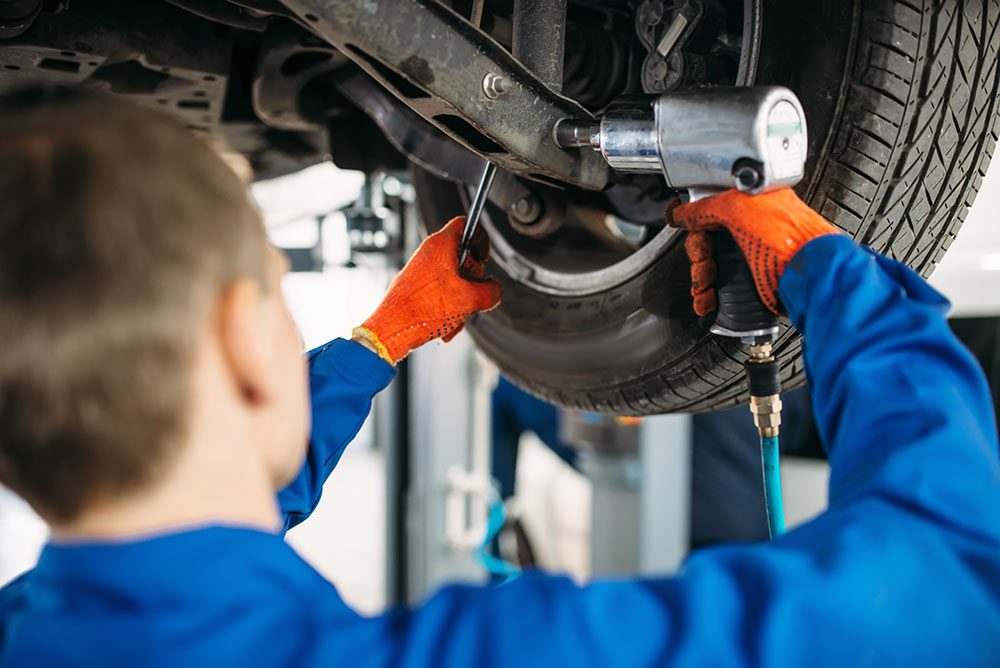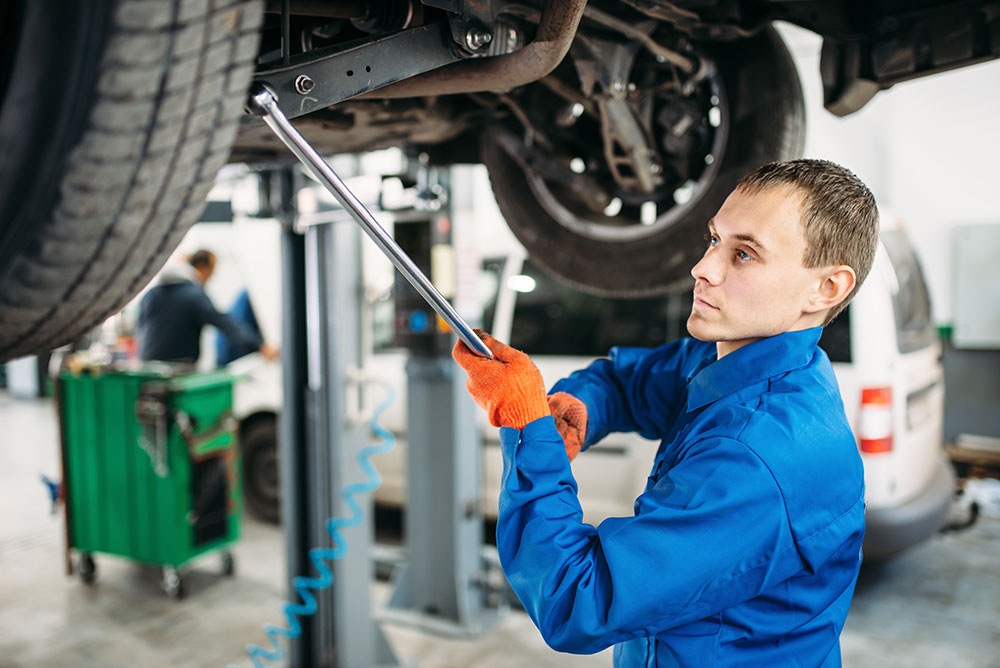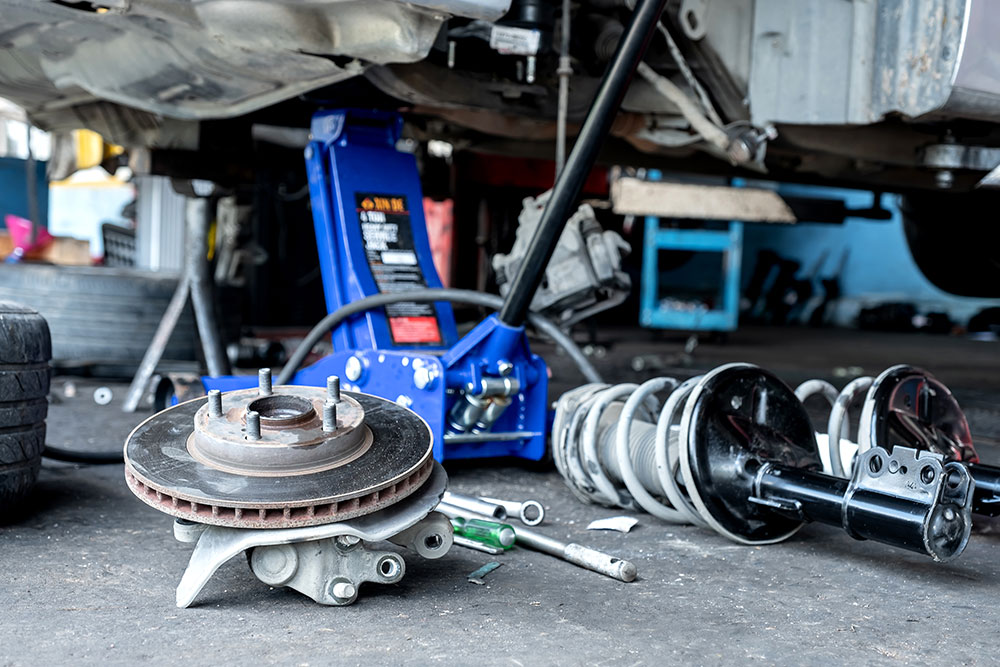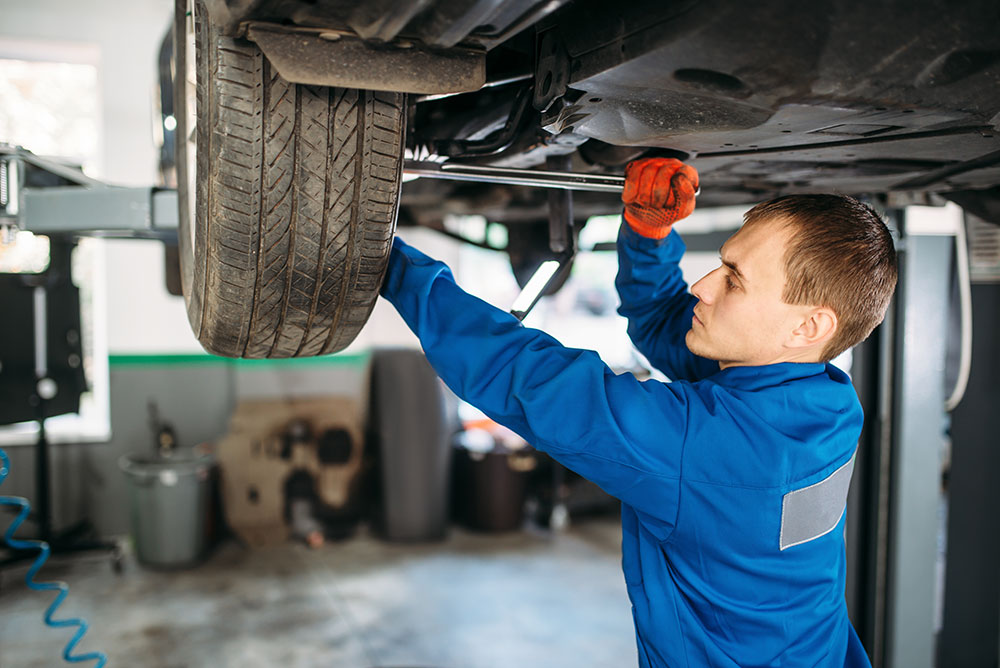
Suspension Repair
Sometimes that huge pothole in the road just can’t be avoided. You’re going to feel that big bump. And so is your vehicle.
All those bumps add up, and issues with your suspension could develop over time. Very large bumps may even cause your car to bottom out. In those cases, when the bottom of your vehicle hits the road or another object, you may need a car suspension repair immediately.
Whether its regular maintenance or an urgent repair, you can rest assured that Best Western’s experienced mechanics are a step above other suspension repair shops. We are committed to comprehensive and thorough repairs, and exceptional customer service, that will keep you safe and get you back on the road as soon as possible.

What You Need to Know
While it’s always best to leave the inspection and maintenance of your suspension system’s many different components to the experts at your local suspension repair shops, here is some information to help you know what’s normal and when something is going wrong.
Your suspension is responsible for smoothing out your ride and keeping your car under control. More precisely, it increases the friction between the tires and the road, delivering steering stability and comfortable handling. Suspension systems not only limit the impact of rough road conditions on your car. They also deliver comfort for you and your passengers.

Suspension Components
There are three main components of a suspension system:
Springs: These are typically found in coil form. Some older car leaf spring systems and some custom vehicles may have been outfitted with air-ride systems. Whichever way, the springs are configured, their job is to absorb bumps and maintain a consistent car drive height.
Shocks and Struts: Next to the springs, you will find shock absorbers (shocks) or struts. These are two different parts, but you often hear people talk about them interchangeably. Most cars have either struts or shocks, but occasionally, you’ll find a vehicle with rear shocks and front struts. We recommend that you familiarize yourself with your own car’s specific suspension system. Knowing this will help you better understand what maintenance might be needed.

Noticing any of these issues? Call us today at 970-484-6255. We’ll diagnose any problems and create a repair plan with you, getting you back to the smooth and comfortable rides you expect from your vehicle.
Typical Suspension Problems
These are some of the most common signs of a bad suspension in your car. These may be especially pronounced after an accident.
Bumpy ride: Many people notice when their struts or shocks are wearing out when they begin to feel every little crack and crevice in the road. When this is the case, driving over any crack or pebble can feel like it’s making the vehicle body bounce. Rough driving like this is a tell-tale sign that your car suspension needs repair.
Dips when stopping: When your shocks wear out, you’ll likely feel your car’s body swaying forward and downward, nose-first, when you brake firmly. This can increase your stop time by up to 20%, affecting your ability to stop the car quickly and safely.
Greasy or oily shocks: If you are able to look under your vehicle, look directly at the struts or shocks. Do they look oily or greasy? If so, it’s highly likely that they’re leaking fluid. And not working correctly. It’s definitely time to visit your suspension repair shop to have them replaced.
One side sits low: Is one side of your car seeming to sit considerably lower than the other? If you’re noticing this, it’s quite possible you have a worn or damaged spring. In this case, you may also hear clunking noises when you drive over deep potholes or bumps.
Steering problems: With a poor suspension system, you may feel your car drifting or pulling when you’re turning. This indicates the shocks are no longer keeping the body of your car stable against the force of a turn. This is an uncomfortable feeling and a safety issue, increasing the risk of a rollover. It’s definitely time to take the vehicle to your suspension repair shop for servicing.
The bounce test: If you suspect your suspension is in need of repair (for any reason), try this test. With your vehicle in park, place all your weight on the front of the car and gently bounce it a few times. Repeat this on the rear of your car. If your car bounces or rocks more than 2 or 3 times after you release it, your suspension is wearing out.
Uneven tire treads: Another indicator that the suspension system isn’t holding your car evenly is tire tread that is wearing down unevenly. You may also notice balding spots. This is a result of uneven amounts of pressure being placed on the tires from a worn suspension.
